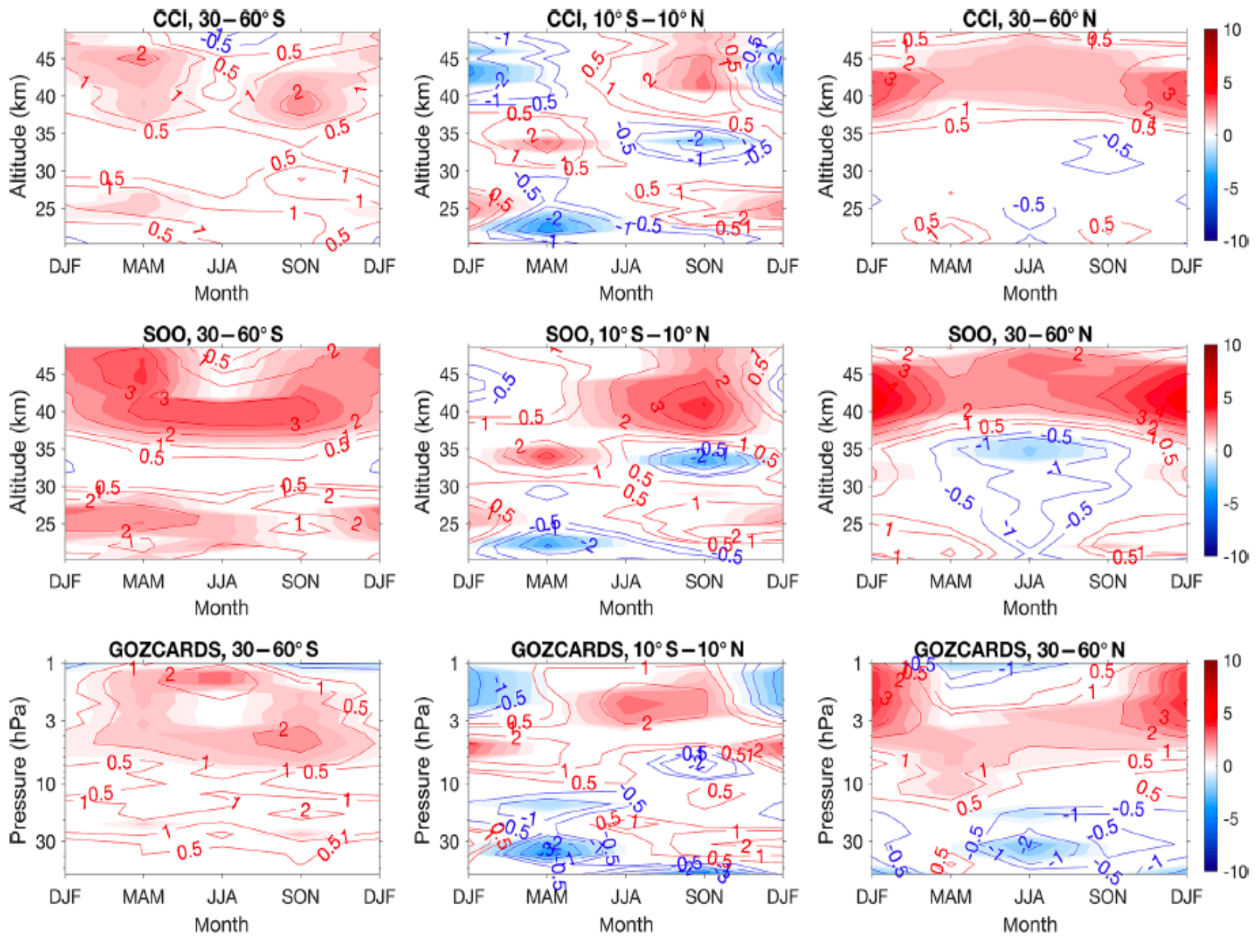
Figure 1. Seasonal variation of linear trends (%/decade) in ozone versus altitude (or pressure) for each of three merged data sets (labeled CCI, SOO, and GOZCARDS from top to bottom rows); trends are calculated over the 2000–2018 time period for three latitude bands (left: 30-60ᴼS, middle: 10ᴼS-10ᴼN, right: 30-60ᴼN).
Technical Description of Figure:
Figure 1. Altitude-season variation of linear trends in ozone for each of three merged data sets calculated over 2000–2018 for three selected latitudinal bands. Data are presented on their natural vertical coordinate: altitude for CCI and SOO and pressure for GOZCARDS. The shading denotes trends that are significant at the 95% level. Note: Besides the 3 merged data sets mentioned here, another merged record was analyzed in this work (the Stratospheric Water and OzOne Satellite Homogenized record, SWOOSH, with results quite similar to GOZCARDS results (these 2 merged records use very similar source data sets).
Scientific significance, societal relevance, and relationships to future missions:
This work is significant for our improved understanding of the variations and trends in stratospheric ozone, which protects the Earth from the harmful effects of solar UV radiation. In terms of future satellite data, there are very few confirmed plans for future missions, such as MLS, with a focus on daily global vertically-resolved composition measurements from the upper troposphere to the upper mesosphere.
Data Sources:
The long-term ozone data records used in this work were produced through various combinations of international satellite instrument data merged onto a homogeneous vertical/temporal grid (typically zonal monthly mean abundance data versus pressure or altitude), including data from SAGE (Stratospheric Aerosol and Gases Experiments) and Aura MLS (Microwave Limb Sounder; see https://disc.gsfc.nasa.gov/datasets?keywords=MLS&page=1), as well as from OSIRIS (Optical Spectrograph and InfraRed Imaging System), OMPS (Ozone Monitor Profiling Suite), and other instruments. The CCI (or SAGE-CCI-OMPS) merged data set is available from the European Space Agency (ESA) Climate Change Initiative (CCI) website (https://climate.esa.int/en/projects/ozone/). The SAGEII-OSIRIS-OMPS (SOO) data set is available from the University of Saskatchewan ftp site. GOZCARDS (Global OZone Chemistry And Related trace gas Data records for the Stratosphere) ozone data (version 2.20) are available by contacting Lucien Froidevaux at JPL; this data version will be updated on the public Goddard Earth Sciences Data and Information Services Center (GES DISC), where version 1 GOZCARDS data reside.
References: Szelag, Monika E., Viktoria F. Sofieva, Doug Degenstein, Chris Roth, Sean Davis, and Lucien Froidevaux, Seasonal stratospheric ozone trends over 2000-2018 derived from several merged data sets, Atmos. Chem. Phys., 20, 7035–7047, https://doi.org/10.5194/acp-20-7035-2020, 2020.
01.2021